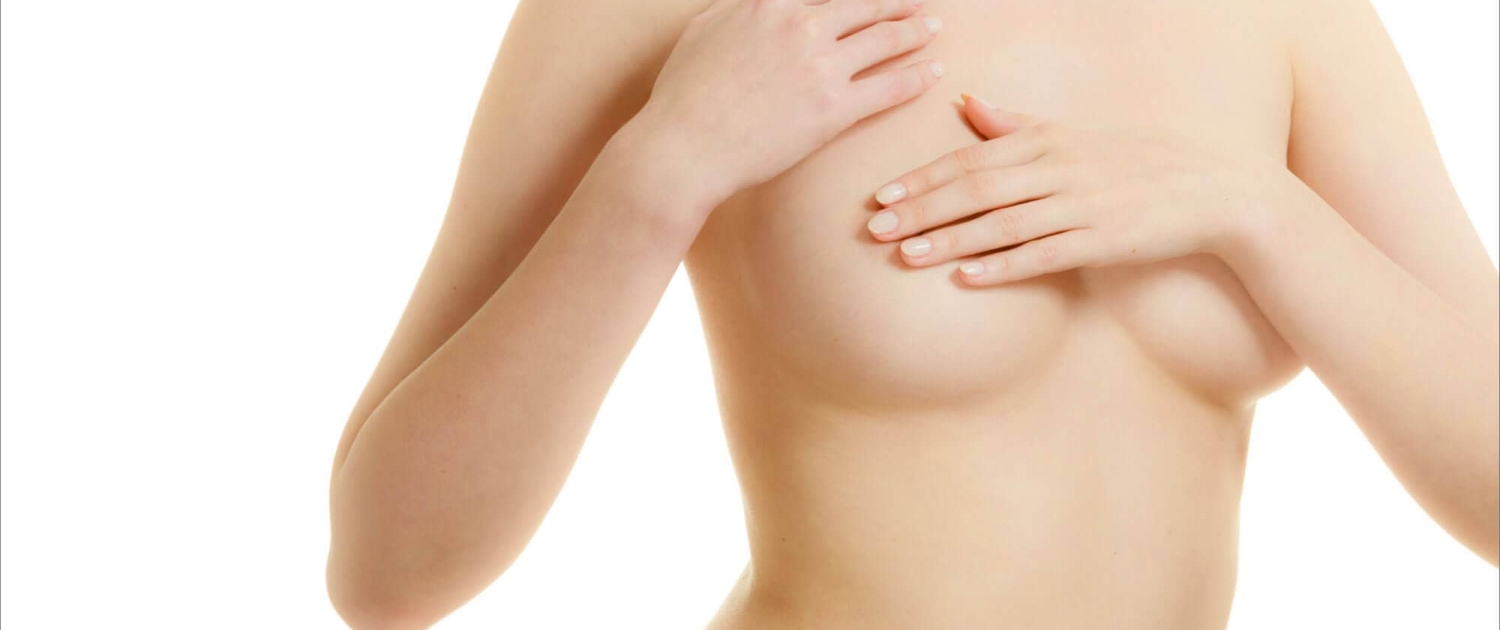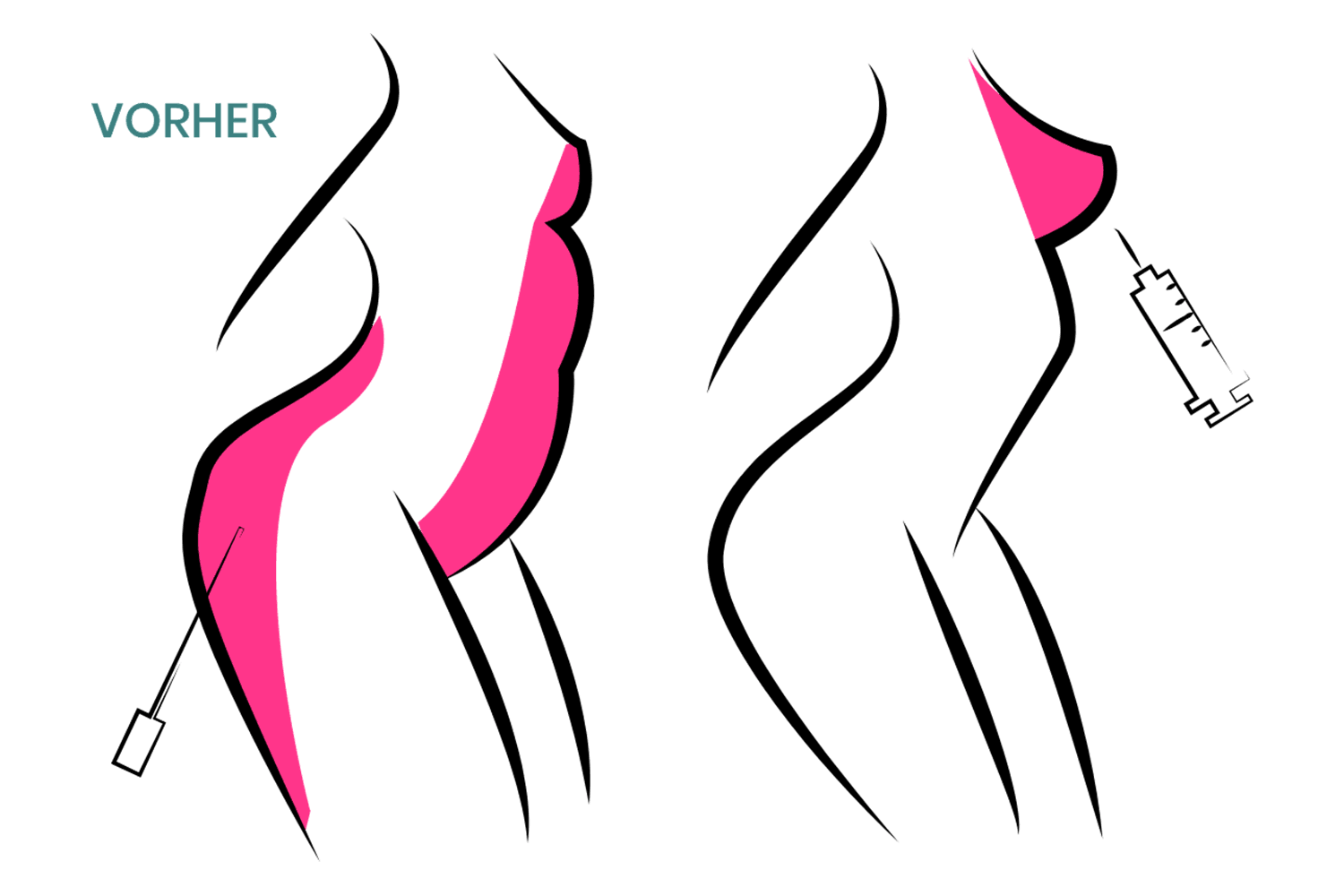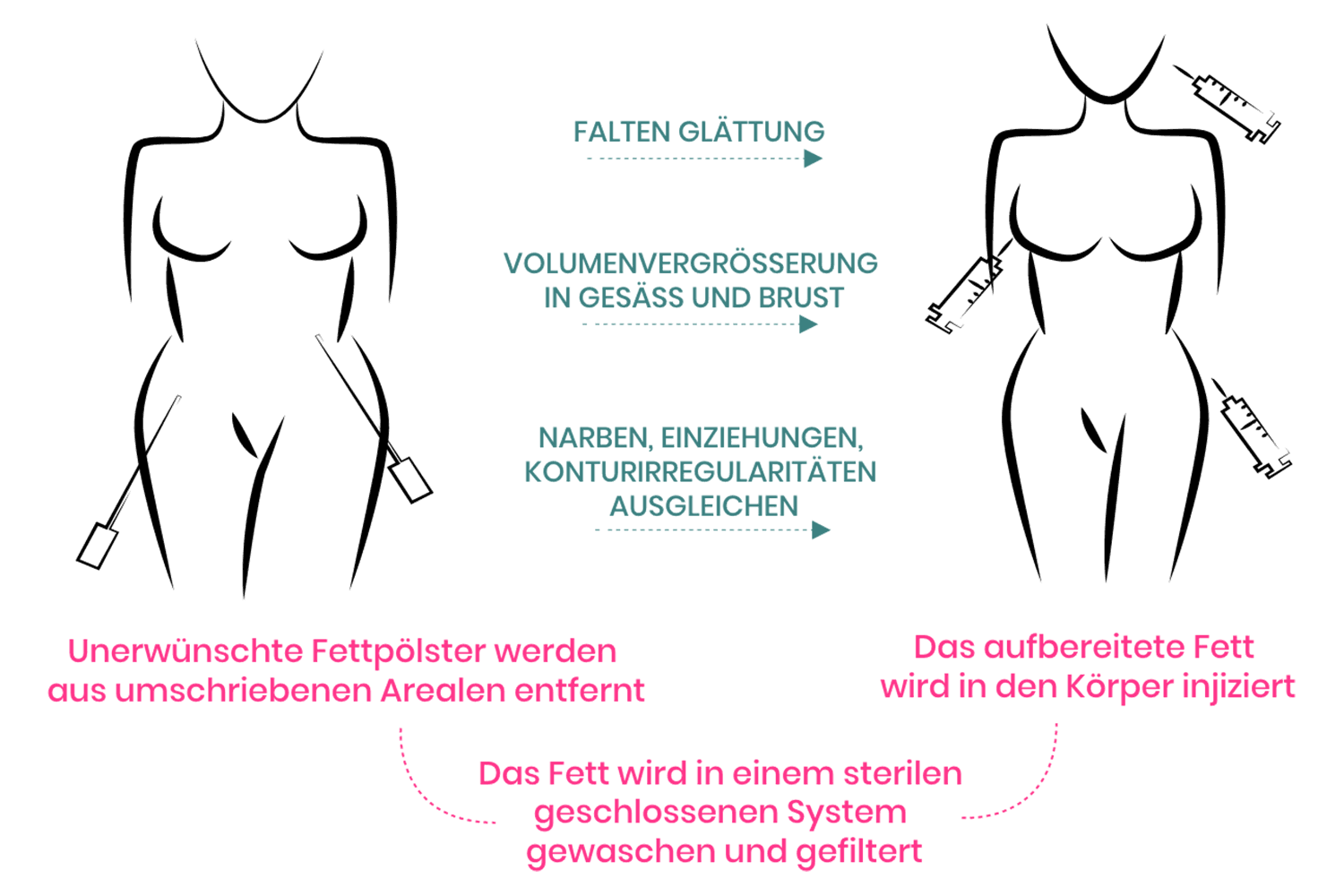Concern over the loss of attractive volume leaves many women afraid to take this step despite increasing complaints.
Many of these patients may now be helped: in a single operation, the implants can be removed, and the same volume can be restored by a multilayered autologous fat transfer. Because the implants have pre-stretched the breast tissue the fabric can absorb the fat optimally. A supplemental transfer is of course possible after a short time (2-3 months).
Assuming that patients have about 1 liter of fat that can be used for the purpose of autologous fat transfer, the operation ‘silicone out / autologous fat in’ is an excellent solution to this long-term complication of breast augmentation.
Besides using autologous fat for breast augmentation when silicone is undesirable, more recently, there are increasing requests for a change: i.e. Silicone out, fat in.
The discovery of stem cells in adipose tissue ( 2001) opened up previously unimagined possibilities for autologous fat transplantation. The stem cells of the fatty tissue are called ADSC (adipose derived stem cells). They differ from the fat cells mainly through the valuable property of being able to evolve in response to their environment into different cell types (niche theory) . These include, inter alia, Skin tissue, connective tissue, blood cells, blood vessels and fat cells. Quickly, highly respected university research groups were established worldwide, with the aim of exploring the possibilities of ADSC and improving surgical results.





